
| Component | Details | Function | Manufacturing Process |
|---|---|---|---|
| Touchscreen Display | 21-32 inches, high-resolution, responsive touchscreen | User interface for selection and interaction | Screen assembly and integration |
| Payment System | Credit/debit card reader, cash acceptor, NFC module | Facilitates secure transactions | Integration of payment hardware and software |
| Ticket Printer | High-speed thermal printer | Prints movie tickets after purchase | Printer installation and calibration |
| Enclosure | Metal or reinforced plastic, customizable branding | Protects internal components, aesthetic design | Fabrication, cutting, and assembly |
| Barcode Scanner | Optical scanner for tickets and loyalty cards | Scans pre-purchased tickets or rewards | Installation of scanner hardware |
| Operating System | Windows/Linux-based, supports custom software | Runs the kiosk software and manages functions | Software installation and configuration |
| Connectivity Modules | Wi-Fi, Ethernet, optional 4G | Enables communication with ticketing servers | Installation of networking components |
| Audio System | Speakers and audio prompts | Provides auditory feedback and assistance | Integration of audio components |
|
|
A movie theater kiosk combines essential hardware and software to enhance user experience and streamline operations. The hardware features a high-resolution touchscreen for easy navigation, a secure payment system supporting cards and NFC, a fast thermal printer for ticket printing, and a barcode scanner for ticket validation. The enclosure is durable, often customizable with branding, protecting all components.
The software, typically running on a Windows or Linux-based system, powers the user interface, making it simple for customers to browse showtimes, select seats, and complete transactions. It includes security features to protect payment data and ensures smooth operation with real-time connectivity through Wi-Fi, Ethernet, or 4G. This integration of hardware and software provides a convenient, self-service option that reduces wait times and enhances the overall moviegoing experience.

1. Operating System: Usually a secure and stable platform like Windows, or Android.
2. User Interface Software: Provides an intuitive and user-friendly interface.
3. Backend Management System: For remote monitoring, reporting, and maintenance.
4. Security Software: Ensures data encryption, fraud detection, and compliance with payment standards.
5. Payment Processing Software: Manages transactions, communicates with payment gateways, and ensures secure processing.
6.Peripheral Device Management Software: Controls peripherals like printers, scanners, and card readers.
7.Analytics and Reporting Software: Collects and analyzes data on kiosk usage and performance.
8.Remote Update and Configuration Software: Facilitates remote updates of software and configurations for maintenance and feature enhancements.
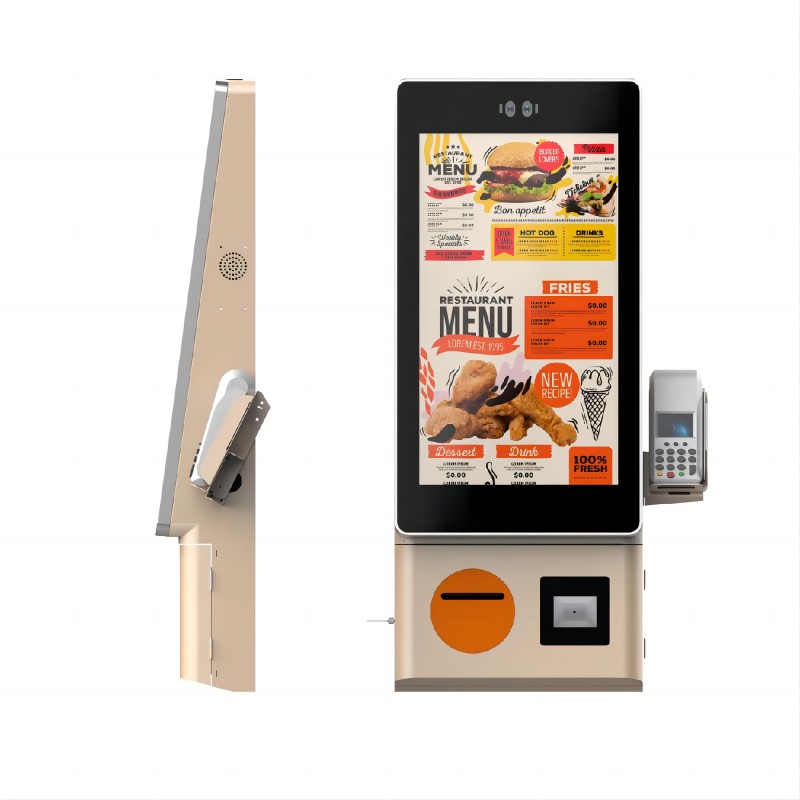
Design and Prototyping: The process begins with designing the kiosk, including selecting materials and components. Prototypes are created to test functionality and design.
Component Sourcing: High-quality components like touchscreens, printers, and payment systems are sourced from reliable suppliers to ensure durability and performance.
Enclosure Fabrication: The kiosk’s enclosure is manufactured, often using metal or reinforced plastic, and customized with branding if needed.
Assembly: All hardware components are assembled into the enclosure, including the touchscreen, payment systems, printer, and barcode scanner.
Software Development and Installation: Custom software is developed to manage ticketing operations, then installed and configured on the kiosk’s operating system.
Quality Testing and Inspection: The final product undergoes rigorous testing to ensure all components work seamlessly, followed by a thorough inspection before shipping.
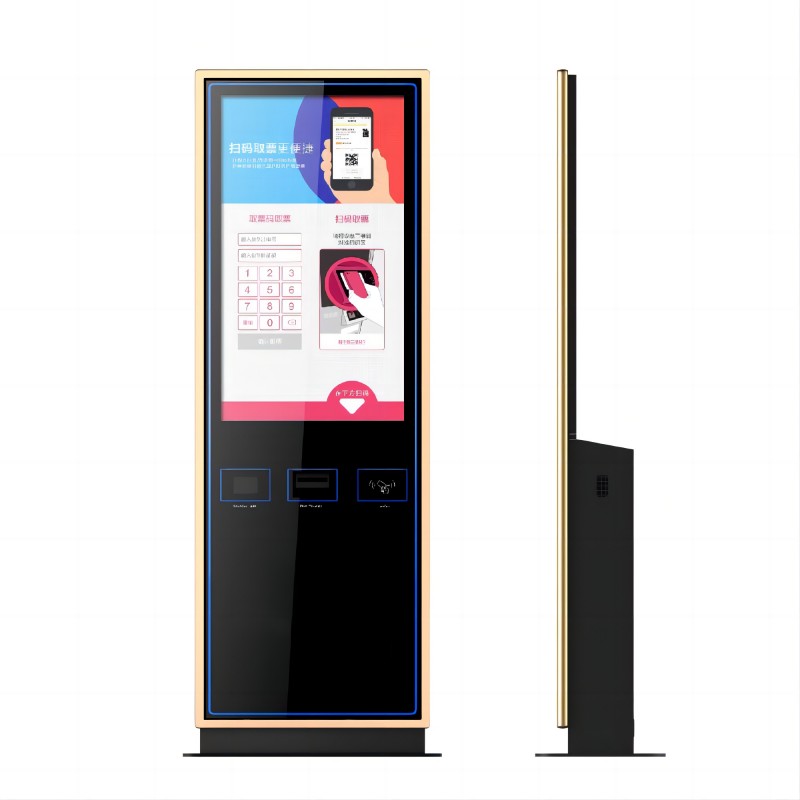
User Interaction: Customers approach the movie theater kiosk and use the touchscreen display to browse available movies, showtimes, and seating options.
Selection Process: The user selects a movie, chooses a showtime, and picks their preferred seats directly on the kiosk screen.
Payment: Once the selections are made, the user proceeds to payment. The kiosk accepts various payment methods, including credit/debit cards, cash, and contactless payments like NFC.
Ticket Printing: After the payment is successfully processed, the kiosk prints out the movie tickets using its high-speed thermal printer.
Ticket Scanning: For those who pre-purchased tickets, the kiosk can scan the barcode or QR code on their mobile device or printed receipt, verifying the purchase.
Confirmation and Receipt: The kiosk provides a confirmation screen and can print or email a receipt, completing the transaction and allowing the user to proceed to their movie.
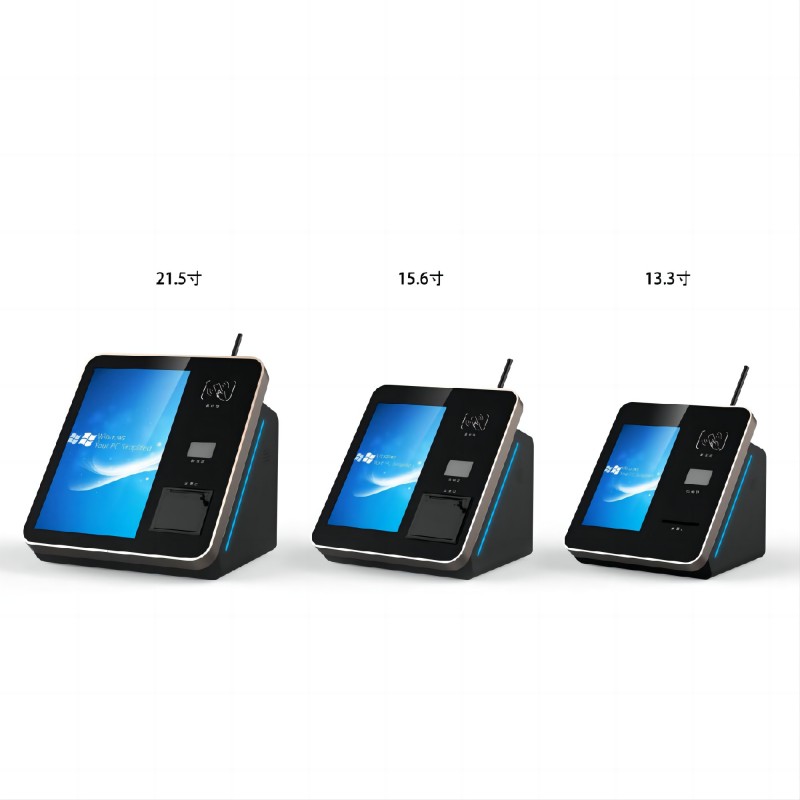
Select Movie: Start by tapping the touchscreen to browse and select the movie you want to watch.
Choose Showtime: Pick a convenient showtime from the available options displayed on the screen.
Select Seats: View the seating chart and choose your preferred seats for the selected show.
Make Payment: Proceed to the payment section, where you can pay using a credit/debit card, cash, or contactless payment methods.
Collect Tickets: Once the payment is processed, the kiosk will print your movie tickets instantly.
Confirm Details: Review the printed tickets or any on-screen confirmation to ensure all details are correct before heading to the theater.
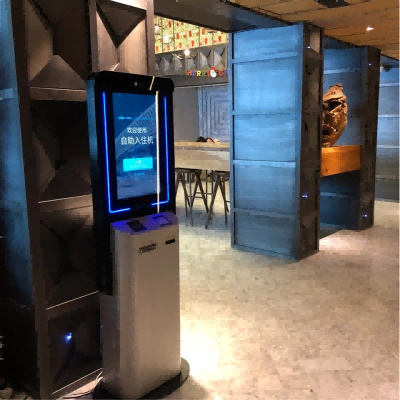
Ticket Purchase: Allows customers to buy movie tickets on-site, reducing wait times at the box office.
Seat Selection: Enables users to view and choose available seats, offering a customized movie experience.
Pre-Purchased Ticket Retrieval: Provides a convenient way to print or scan tickets that were bought online or through a mobile app.
Loyalty Program Management: Facilitates the use of loyalty cards or programs, letting customers earn and redeem rewards directly at the kiosk.
Concession Ordering: Some kiosks allow users to order snacks and beverages, streamlining the concession stand process.
Advertising and Promotions: Displays trailers, promotions, and special offers to customers while they interact with the kiosk, enhancing marketing efforts.
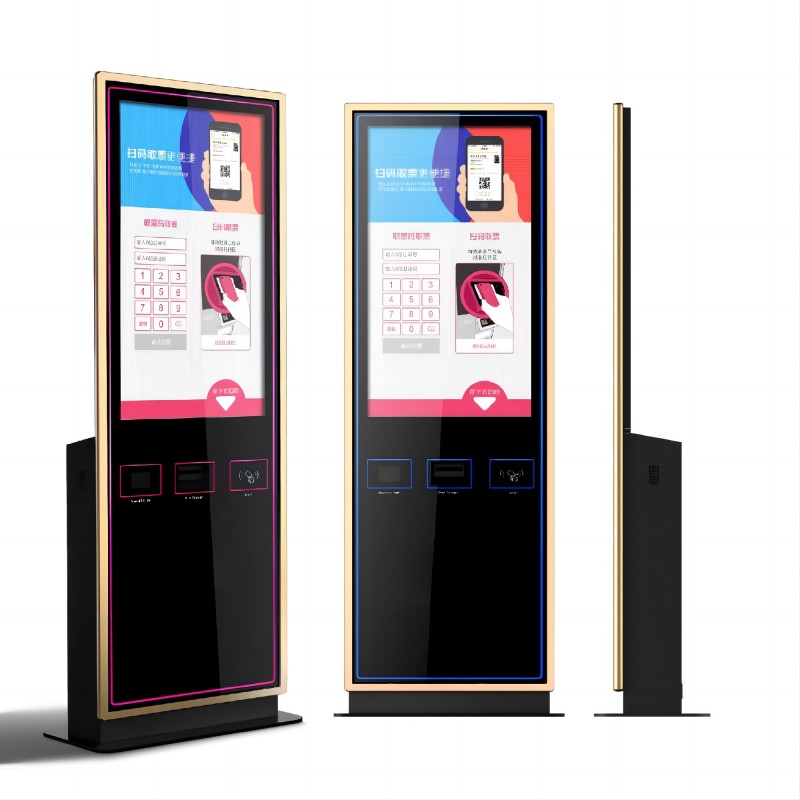
Branding and Graphics: Customize the kiosk’s exterior with company logos, colors, and promotional graphics to align with your theater’s branding.
Screen Size and Resolution: Choose different screen sizes and resolutions to fit the kiosk’s location and ensure optimal user interaction.
Payment Options: Tailor the payment system to include various methods such as credit/debit cards, mobile payments, or even cash acceptance.
Software Interface: Customize the user interface to match your theater’s style, including layout, language options, and promotional content.
Enclosure Material and Design: Select from different materials like metal or plastic, and choose design features such as shape, lighting, and finishes.
Additional Features: Add extra functionalities like barcode scanners, printers, or customer feedback systems to enhance the kiosk’s utility and customer experience.
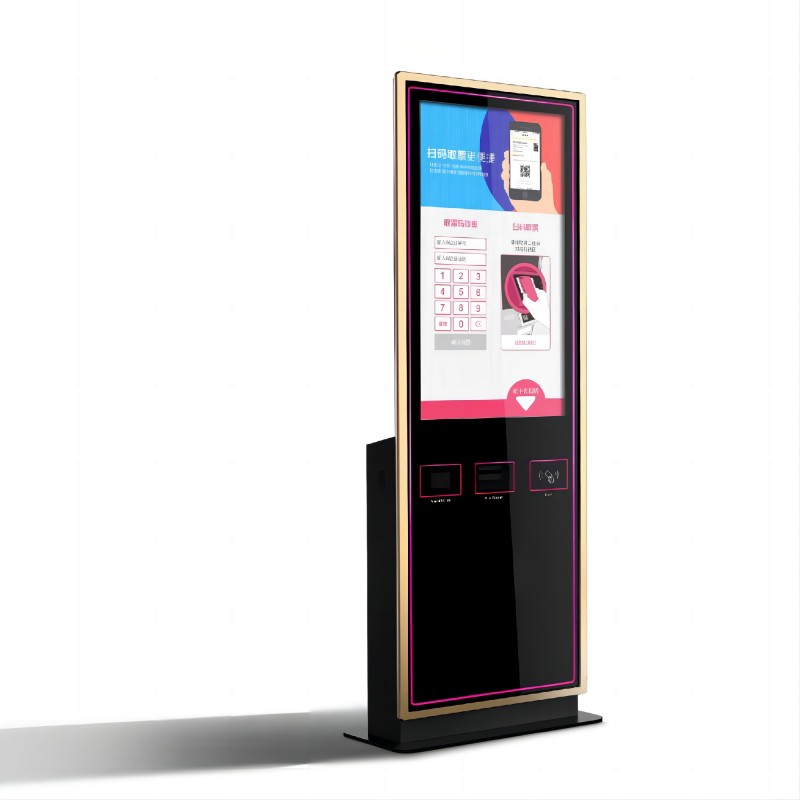
Reduced Wait Times: Streamlines the ticket purchase process, allowing customers to quickly buy tickets without standing in long lines.
Enhanced Customer Experience: Offers a convenient, self-service option for moviegoers to select seats, pay, and retrieve tickets on their own.
Increased Sales: Encourages impulse purchases of tickets and concessions, potentially boosting overall sales for the theater.
Efficient Operations: Reduces the workload on staff, allowing them to focus on other customer service areas.
24/7 Availability: Allows customers to purchase tickets outside of regular box office hours, increasing accessibility.
Targeted Marketing: Provides a platform to display advertisements, promotions, and upsell opportunities directly to customers during the transaction process.
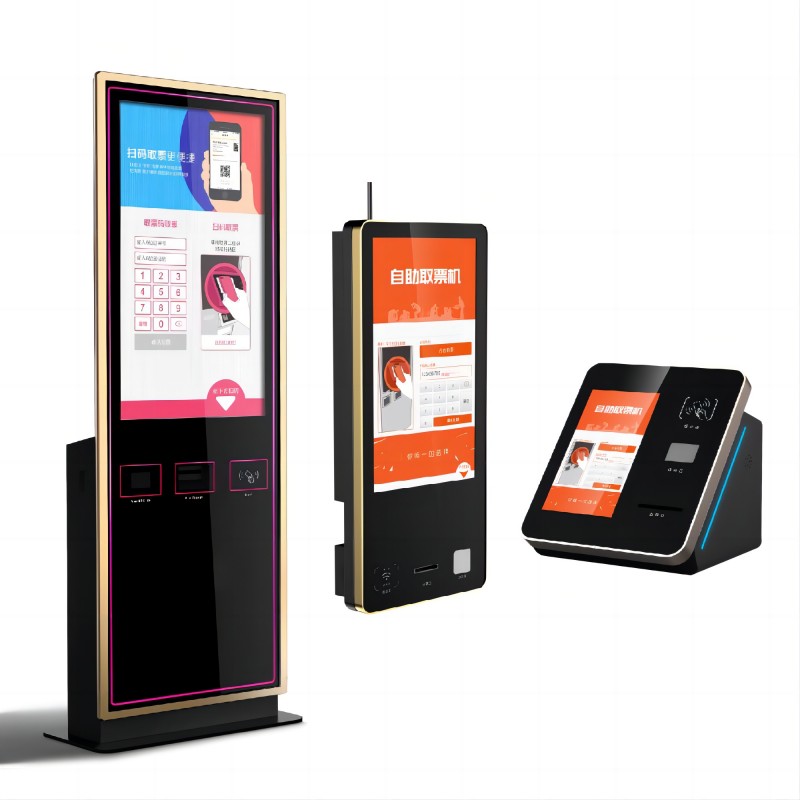
The cost of a movie theater kiosk varies based on customization, hardware, and software features, typically ranging from $3,000 to $10,000 per unit. While the initial investment might seem substantial, the return on investment (ROI) is compelling. Kiosks can significantly reduce labor costs by automating ticket sales, leading to savings on staffing. Additionally, they increase revenue through upselling opportunities, such as promoting premium seats or concession items. The improved customer experience also drives repeat business. Over time, these factors contribute to a quick ROI, often within 12-18 months, making kiosks a cost-effective solution for theaters.
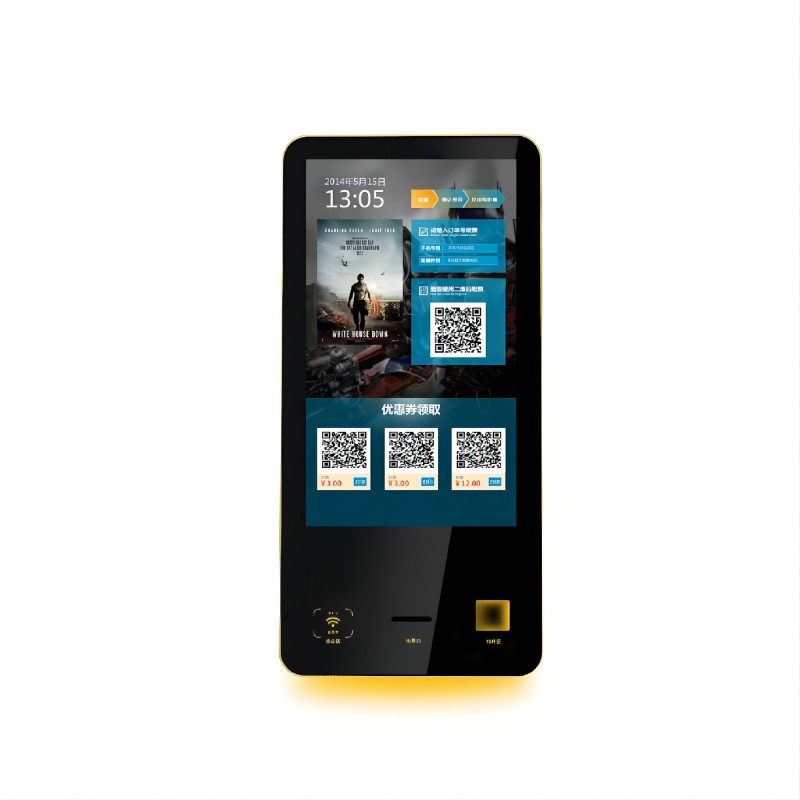
Assess Your Needs: Determine the primary functions you need, such as ticket sales, seat selection, or concession ordering, to ensure the kiosk meets your theater's specific requirements.
Consider Customization: Choose a kiosk that allows for branding and software customization to align with your theater’s aesthetic and operational workflow.
Evaluate Payment Options: Ensure the kiosk supports multiple payment methods, including credit/debit cards, mobile payments, and cash, to cater to all customer preferences.
Check Durability and Quality: Invest in kiosks made from durable materials with reliable components to withstand heavy usage in high-traffic areas.
Plan for Maintenance and Support: Select a vendor that offers comprehensive support and maintenance services to keep the kiosk running smoothly over time.
Compare Costs and ROI: Evaluate the total cost of ownership, including installation, maintenance, and potential upgrades, against the expected ROI to ensure a sound investment.
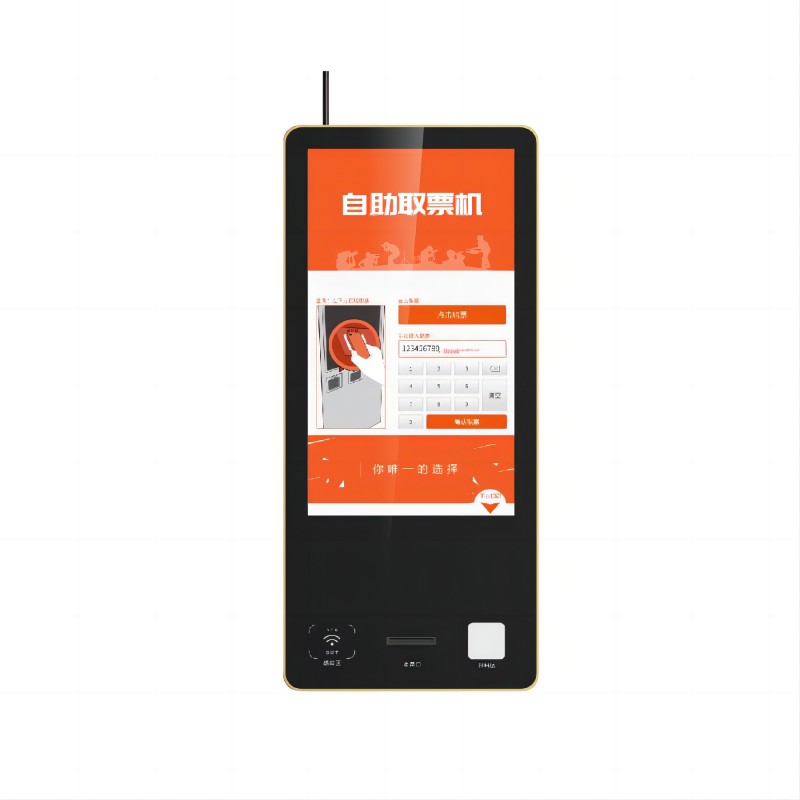
A movie theater kiosk is a self-service terminal that allows customers to purchase tickets, select seats, and order snacks. These kiosks streamline the ticketing process, reducing wait times and enhancing the overall customer experience.
Using a movie theater kiosk involves selecting your movie, choosing a showtime, picking seats, and making a payment. After completing the transaction, the kiosk prints your tickets or sends them digitally to your mobile device.
Movie theater kiosks typically accept various payment methods, including credit/debit cards, mobile payments (e.g., Apple Pay, Google Pay), gift cards, loyalty points, and promotional codes, offering flexibility for customers.
Else faqs you can click movie theater kiosk FAQS to learn more!
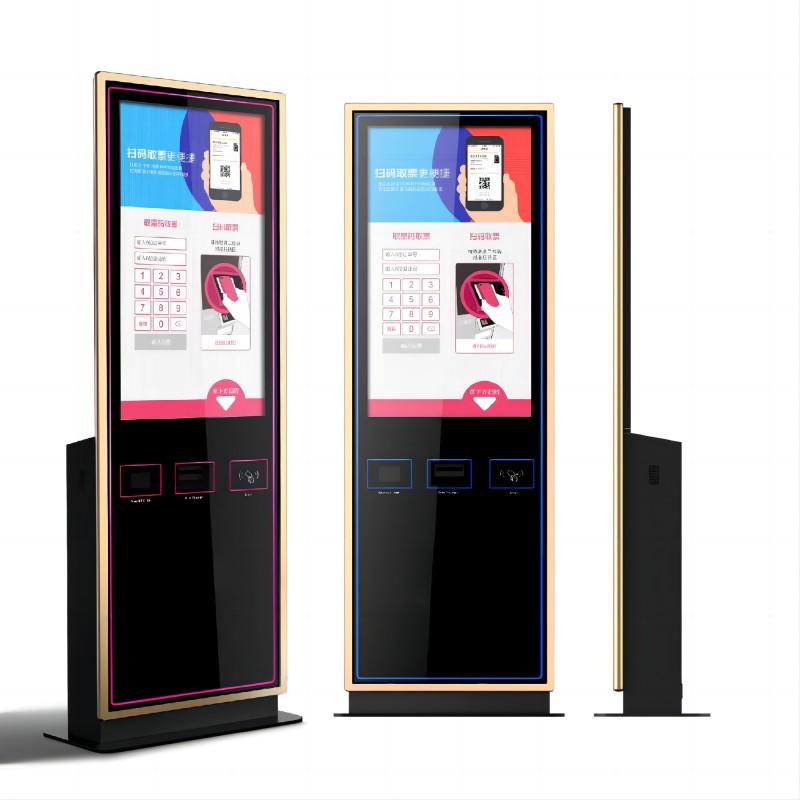
Movie Theater Kiosk Case Study: Enhancing Efficiency and Sales in Tokyo's Business District Cinema, this is a Movie theater kiosk case study, read it to learn more about how Movie Theater Kiosk In Cinema Reduce costs and increase efficiency, we offer high quality movie theater kiosk, movie theater ticket kiosk manufacturing from China.
Watch the video overview of our movie theater kiosk, where Lean Kiosk Systems showcases different styles, demonstrating how to scan a QR code with a mobile phone or manually enter a ticket code to print a movie ticket. Click to watch carefully and learn more about the details of our movie theater kiosks.
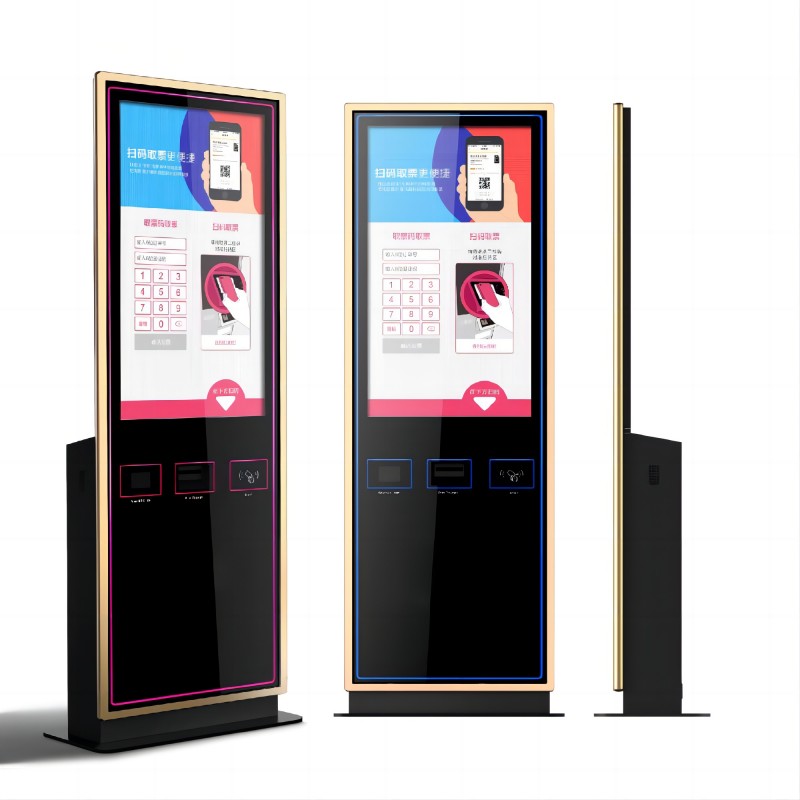
| Type | Sizes | Design | Price Range |
|---|---|---|---|
| Ticketing Kiosk | 32” - 55” screens | Freestanding, wall-mounted options | $3,000 - $8,000 |
| Concession Kiosk | 32” - 42” screens | Countertop, integrated with POS | $4,000 - $9,000 |
| Self-Service Kiosk | 42” - 55” screens | Dual-sided, multi-functional | $5,000 - $10,000 |
| Loyalty Program Kiosk | 32” - 42” screens | Compact, touchscreen | $3,000 - $6,000 |
Identify Your Needs: Start by defining what functions you need the kiosk to perform (e.g., ticket sales, concessions, loyalty programs).
Research Vendors: Look for reputable kiosk manufacturers with experience in the movie theater industry. Consider their portfolio, customer reviews, and years of experience.
Customization Options: Ensure the vendor offers customization options to match your theater’s branding, preferred software, and hardware requirements.
Request a Demo: Ask for a live demonstration or trial period to test the kiosk’s functionality, user interface, and durability.
Compare Quotes: Obtain detailed quotes from multiple vendors, including costs for installation, software, maintenance, and any additional services.
Check Warranty and Support: Verify the warranty terms and the availability of ongoing technical support to ensure long-term reliability.
Make the Purchase: Once satisfied with the vendor’s offering, proceed with the purchase, ensuring that all agreed-upon features and terms are documented in the contract.
What did our happy clients say?
Extremely satisfied with our new movie theater kiosk! The sleek design and easy-to-use interface have greatly improved our customer experience. Highly recommend this manufacturer for their excellent service!
Our theater’s operations have become much smoother with these kiosks. The setup was seamless, and customer feedback has been overwhelmingly positive. Great investment and top-notch quality!
These kiosks have transformed our ticketing process. They are reliable, efficient, and look fantastic in our lobby. Kudos to the manufacturer for delivering such a high-quality product!
We’re thrilled with the movie theater kiosks are purchased! They’ve helped reduce wait times and increase sales. The manufacturer’s support team was also fantastic throughout the installation process.